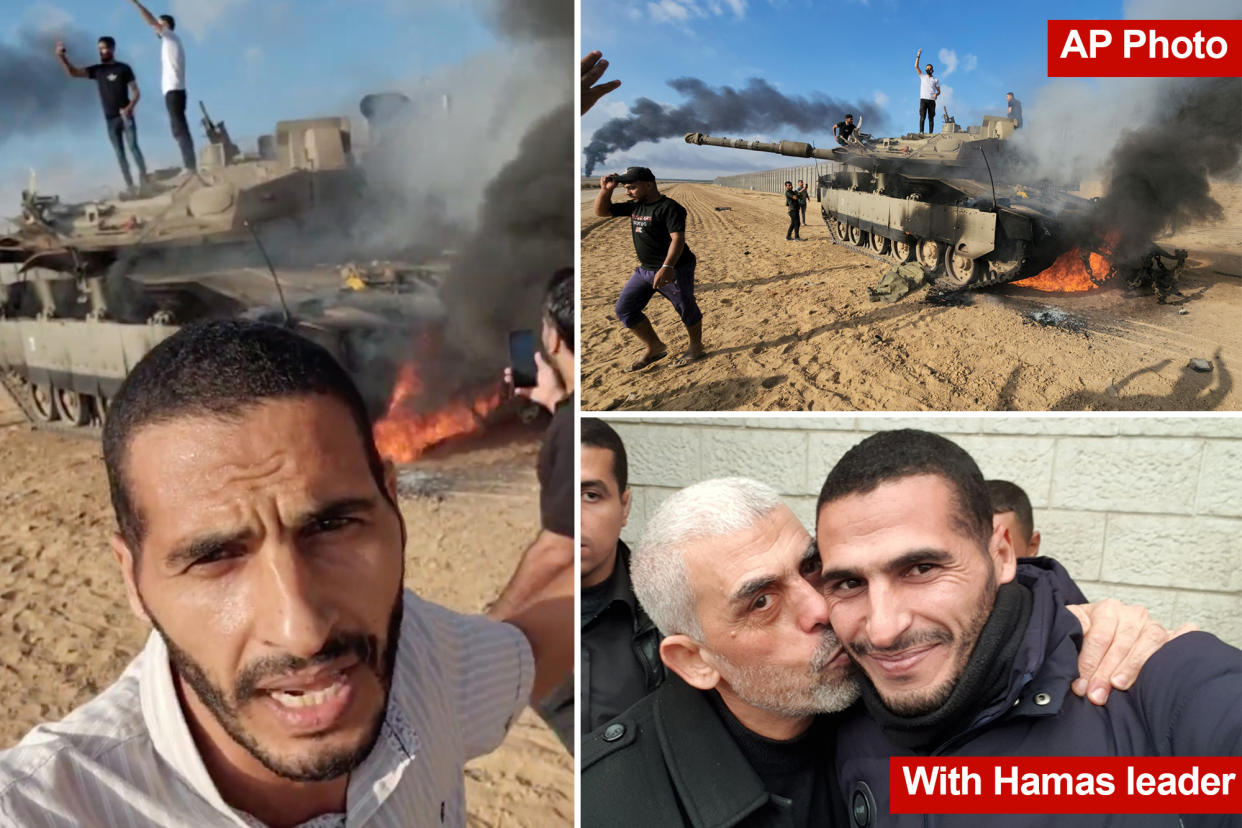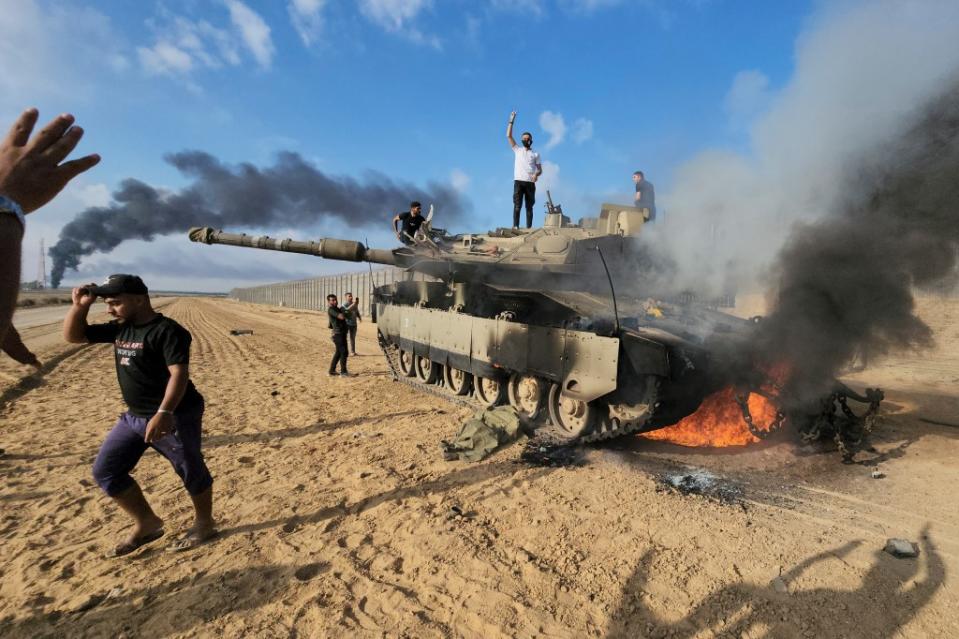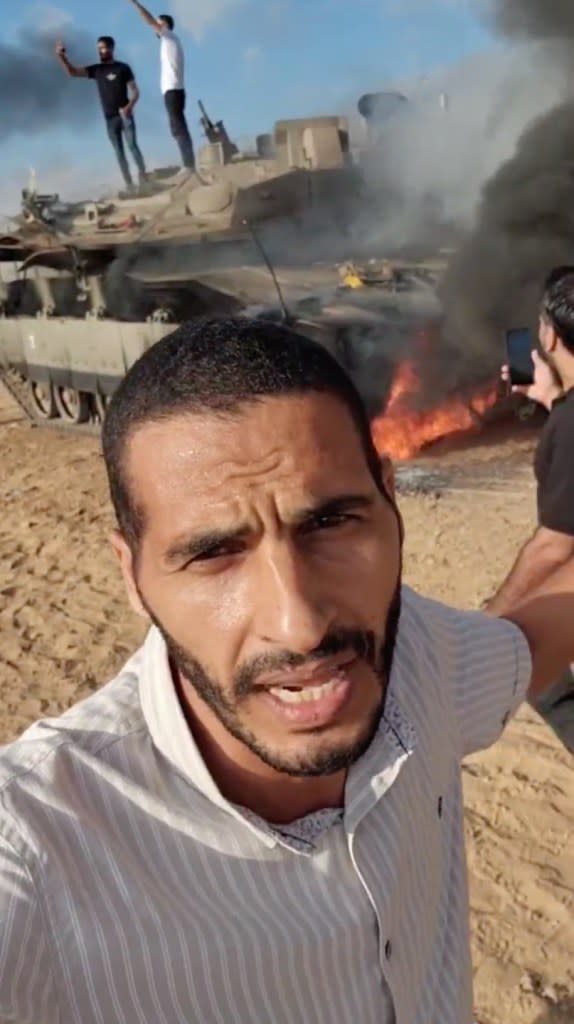Oct. 7 survivors sue AP for hiring freelance photographers ‘embedded with Hamas terrorists’: lawsuit

Several survivors of Hamas’ Oct. 7 attack on Israel have accused the Associated Press in a new lawsuit of aiding and abetting the terrorist organization by using freelance photojournalists believed to be embedded with the violent militants.
The plaintiffs — Israeli-Americans and Americans who attended the Nova music festival raided by Hamas as well as loved ones of victims — are suing the news outlet for damages under the Antiterrorism Act, according to the federal complaint filed in the Southern District of Florida Wednesday night.
They are being represented by lawyers working with the nonprofit National Jewish Advocacy Center who accuse the major media company of “materially supporting terrorism” by paying alleged Hamas-associated photojournalists for images captured during and immediately after the Oct. 7 invasion.

“There is no doubt that AP’s photographers participated in the October 7th massacre, and that AP knew, or at the very least should have known, through simple due diligence, that the people they were paying were longstanding Hamas affiliates and full participants in the terrorist attack that they were also documenting,” the complaint alleges.
The suit mentions the names of four freelance photographers whose work was purchased and published by the AP and claims that the four are “known Hamas associates who were gleefully embedded with the Hamas terrorists during the October 7th attacks.”
But the majority of the complaint focuses on one photojournalist, Hassan Eslaiah — who has been accused of being a Hamas associate even before the terrorist groups’ bloody invasion of Israel.
Eslaiah, who the AP severed ties with in November, was accused in the suit of being side by side with Hamas terrorists while they went about shooting and slaughtering innocent Israelis.
The photojournalist filed some of the earliest and most comprehensive images from the scene. He admitted to hitching a ride back to Gaza from Hamas militants, though he has denied having any advance knowledge of the attack nor links to the terrorist group, according to the New York Times — which also faced backlash for using his photos.
Eslaiah was photographed smiling alongside Hamas commander Yahya Sinwar who planted a kiss on his cheek and placed his arm around the journalist in a 2020 image that spread online following the attack.

Some reports have accused him of holding a grenade on the back of a scooter driven by a Hamas member in a video that was posted to social media — an allegation he has denied to the Times.
The lawyers allege that the AP was made aware of Eslaiah’s alleged ties to Hamas but continued to pay for his freelance work.
“AP willfully chose to turn a blind eye to these facts, and instead profited from its terrorist photographer’s participation in the massacre through its publication of the ‘exclusive’ images, for which it certainly paid a premium, effectively funding a terrorist organization,” the suit alleges.
Questions about the photojournalists’ allegiances were first raised by pro-Israel media watchdog, Honest Reporting, just days after the terrorists’ gruesome invasion of the Jewish nation.
The group speculated that six Gaza-based photographers had advanced knowledge of the attack because they were early to the scene.

In response, AP put out a statement staunchly denying it had any knowledge of the Oct. 7 attacks before they happened.
“The first pictures AP received from any freelancer show they were taken more than an hour after the attacks began,” AP’s vice president of corporate communications Lauren Easton said in the Nov. 9 statement. “No AP staff were at the border at the time of the attacks, nor did any AP staffer cross the border at any time.”
“We are no longer working with Hassan Eslaiah, who had been an occasional freelancer for AP and other international news organizations in Gaza,” Easton added.
The last images taken by Eslaiah and purchased by AP are from Nov. 2 while the oldest — close-ups of masked Hamas operatives building incendiary balloons to send into Israel — date back to September 2021.
National Jewish Advocacy Center director Mark Goldfeder slammed the media outlet for its actions.
“Media organizations do not have any special right to act with impunity and pretend that they don’t know whom they are paying,” he said.
“And as other cases have made clear, it does not matter that the people AP was paying, with whom they had longstanding relationships, were freelancers and not employees; the issue is that AP was furnishing material support to a foreign terrorist organization, not in what capacity the terrorists were cashing the checks.”
The Associated Press and Eslaiah did not immediately return requests for comment regarding the legal action.

 Yahoo News
Yahoo News 
